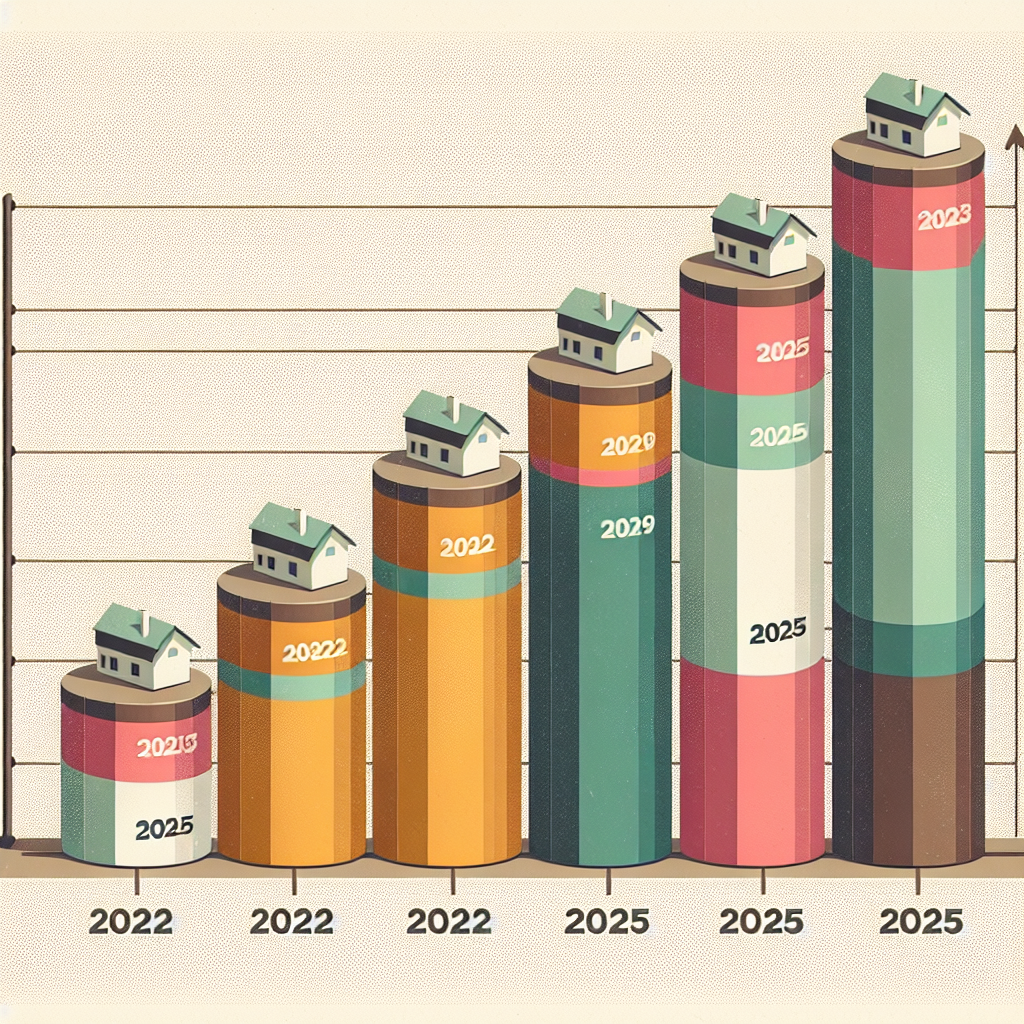Projecting Home Equity Growth for 2025
Projecting Home Equity Growth for 2025
As we look towards 2025, the landscape of home equity is poised for significant changes. Home equity, the difference between the market value of a home and the outstanding balance of all liens on the property, is a critical component of personal wealth for many homeowners. Understanding the factors that will influence home equity growth in the coming years is essential for homeowners, investors, and policymakers alike.
Current Trends in Home Equity
Before projecting future growth, it’s important to understand the current trends in home equity. Over the past decade, home equity has seen substantial growth, driven by a combination of rising home prices and decreasing mortgage debt. According to the Federal Reserve, U.S. homeowners had a collective $21 trillion in home equity as of 2023, a significant increase from previous years.
- Rising home prices: The median home price in the U.S. has increased by approximately 30% over the past five years.
- Decreasing mortgage debt: Homeowners have been paying down their mortgages faster, reducing the overall debt burden.
- Low interest rates: Historically low interest rates have made refinancing more attractive, allowing homeowners to reduce their monthly payments and increase equity.
Factors Influencing Home Equity Growth in 2025
Several key factors will influence home equity growth as we approach 2025. These include economic conditions, housing market dynamics, and demographic shifts.
Economic Conditions
The overall health of the economy will play a significant role in home equity growth. A strong economy typically leads to higher employment rates and wage growth, which can increase demand for housing and drive up home prices. Conversely, an economic downturn could lead to stagnation or even a decline in home equity.
Housing Market Dynamics
The supply and demand dynamics of the housing market will also impact home equity. A shortage of housing inventory can lead to increased competition among buyers, driving up prices and, consequently, home equity. On the other hand, an oversupply of homes could lead to price stagnation or declines.
Demographic Shifts
Demographic changes, such as the aging of the Baby Boomer generation and the rise of Millennials as a dominant home-buying force, will also influence home equity. As Boomers downsize or move into retirement communities, there may be an increase in housing supply. Meanwhile, Millennials entering the housing market could drive demand and support price growth.
Case Studies and Examples
To illustrate these points, consider the case of San Francisco, a city that has experienced significant home equity growth due to a booming tech industry and limited housing supply. Homeowners in San Francisco have seen their equity increase by over 50% in the past five years. In contrast, cities like Detroit, which have faced economic challenges and population decline, have seen more modest home equity growth.
Projections for 2025
Based on current trends and influencing factors, several projections can be made about home equity growth in 2025:
- Continued growth in urban areas: Cities with strong job markets and limited housing supply are likely to see continued home equity growth.
- Potential slowdowns in rural areas: Areas with declining populations or economic challenges may experience slower growth or even declines in home equity.
- Impact of interest rates: If interest rates rise, it could slow down refinancing activity and impact home equity growth.
Conclusion
Projecting home equity growth for 2025 involves considering a complex interplay of economic conditions, housing market dynamics, and demographic shifts. While urban areas with strong economies are likely to see continued growth, other regions may face challenges. Homeowners and investors should stay informed about these trends to make strategic decisions. As we move towards 2025, understanding these factors will be crucial for maximizing home equity and personal wealth.



